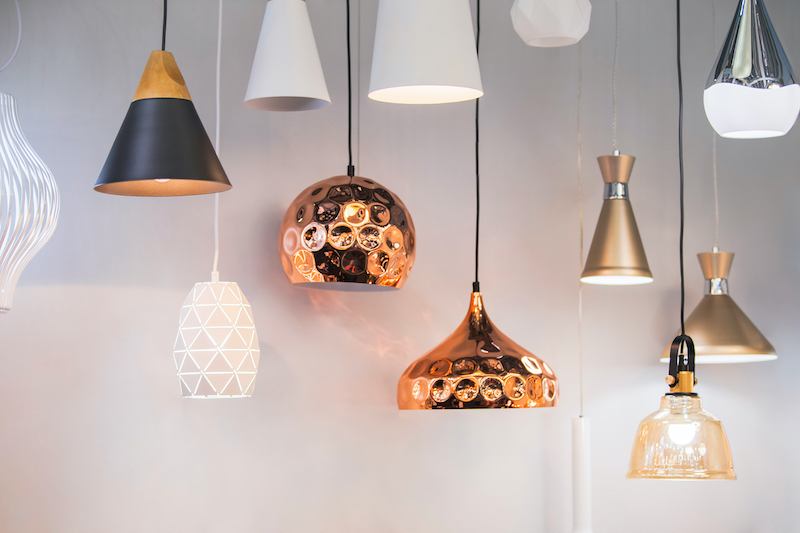Lighting is one of the most crucial yet often overlooked elements of interior design. It sets the tone for how we experience a space, affecting everything from the room’s mood to how well we can complete tasks. The right lighting can transform your home, making rooms feel larger, warmer, or more inviting. By understanding the different types of lighting and how to layer them effectively, you can create the perfect ambiance in every room of your home.In this blog, we will explore the different types of lighting—task, ambient, and accent—and provide guidance on how to layer them to achieve balance and functionality in your living spaces.
1. Understanding the Three Types of Lighting
Before diving into lighting design, it’s essential to understand the three main types of lighting and how they serve different purposes in each room:
Task Lighting: This type of lighting is focused and functional. It is meant to illuminate specific areas where you need to perform tasks, such as reading, cooking, or working. Examples include desk lamps, under-cabinet kitchen lights, and bathroom vanity lights.
– Ambient Lighting: Ambient lighting provides overall illumination in a room, creating a comfortable level of brightness without being too harsh. This could come from overhead ceiling lights, chandeliers, or recessed lighting. It serves as the main source of light that fills the space.
– Accent Lighting: Accent lighting is used to highlight specific objects or features in a room, such as artwork, architectural details, or decorative elements. This type of lighting is often softer and more subtle, helping to add depth and character to your space. Examples include track lighting, wall sconces, and picture lights.
2. Layering Light for the Perfect Balance
One of the key principles in effective lighting design is layering. Just as you would layer textures or colors in a room’s decor, you can also layer different types of lighting to create a harmonious and functional environment.
Here’s how you can apply the concept of layering light:
– Start with Ambient Lighting: Begin by addressing the overall illumination in the room. Ambient lighting acts as the foundation, so choose fixtures like ceiling-mounted lights, chandeliers, or recessed lighting that evenly distribute light throughout the space. For large rooms, you may want to incorporate multiple sources of ambient light to avoid dark corners.
– Add Task Lighting: Next, focus on areas where specific tasks are performed. For example, in a kitchen, add under-cabinet lights to illuminate countertops. In a living room, a floor lamp beside a reading chair or table lamps on either side of a sofa can provide localized light. This ensures that certain areas of the room are lit appropriately for focused activities.
– Incorporate Accent Lighting: Finally, use accent lighting to highlight key features and bring an extra layer of depth to the room. This could be as simple as a wall sconce casting soft light on a textured wall, or a spotlight illuminating a prized piece of artwork. Accent lighting helps to create visual interest and contrast, enhancing the room’s aesthetic appeal.
3. Room-by-Room Lighting Guide
Each room in your home has unique lighting needs based on its function, size, and design. Here’s a quick guide on how to approach lighting in different spaces:
– Living Room: As a multifunctional space, the living room requires a balance between ambient, task, and accent lighting. Combine overhead lighting with strategically placed floor and table lamps to create a cozy yet functional space. Use dimmers to adjust the ambiance based on the time of day or occasion.
– Kitchen: The kitchen is one of the most task-heavy areas in the home, so proper task lighting is essential. Install under-cabinet lights to brighten countertops and pendant lights above kitchen islands. A bright overhead light, such as recessed lights or a large ceiling fixture, ensures the entire space is well lit. Accent lighting can be used to highlight a backsplash or showcase decorative shelving.
– Bedroom: Bedrooms should be serene and relaxing, so aim for softer, ambient lighting with a combination of task lights for reading or dressing. Use bedside lamps or sconces for reading and a central ceiling light with a dimmer for ambient light. Accent lighting can softly highlight artwork or architectural details.
– Bathroom: In bathrooms, task lighting is crucial around mirrors for grooming and makeup application. Sconces on either side of the mirror can minimize shadows on your face. Ambient lighting can come from ceiling-mounted fixtures or recessed lights, while accent lighting can highlight a beautiful tile pattern or vanity.
– Dining Room: The dining room is a space for gathering, so aim for warm, inviting lighting. A statement chandelier above the dining table can serve as both ambient and accent lighting. Consider using dimmers to adjust the light intensity during meals. Wall sconces or cove lighting can add a touch of elegance and create a layered lighting effect.
4. Choosing the Right Light Bulbs
Selecting the right bulbs is just as important as choosing the right fixtures. Different bulbs emit different levels of brightness and warmth, which can affect the overall feel of a room:
– LED Bulbs: These are energy-efficient and long-lasting. LEDs are available in various color temperatures, from warm (soft white) to cool (daylight). For living spaces, warm white (2700K–3000K) creates a cozy, inviting atmosphere, while cool light is better suited for task-oriented areas like kitchens or bathrooms.
– Incandescent Bulbs: Though less energy-efficient than LEDs, incandescent bulbs emit a warm, soft light that’s ideal for creating a cozy, intimate atmosphere in living rooms or bedrooms.
– CFL Bulbs: Compact fluorescent bulbs are also energy-efficient, but they may take a few moments to reach full brightness. They are available in both warm and cool light options.
Tip: Always consider the color temperature (measured in Kelvin) when choosing light bulbs. A lower Kelvin number (2700K–3000K) emits a warmer, yellowish light, while a higher number (4000K–5000K) produces a cooler, bluer light.
5. The Importance of Dimmers
Dimmers are one of the most versatile tools in lighting design. They allow you to control the intensity of the light, making it easy to adjust the mood of a room depending on the time of day, activity, or occasion. For example, you might want bright light for reading but prefer a softer, dimmer light for watching a movie or relaxing.
Tip: Install dimmer switches in key areas like living rooms, bedrooms, and dining rooms. This simple addition can make a huge difference in how you experience the space and help save energy by reducing the light intensity when full brightness isn’t needed.
Final Thoughts
Lighting is a powerful tool in creating the perfect ambiance and functionality in every room of your home. By understanding the different types of lighting and how to layer them effectively, you can enhance the mood, functionality, and overall aesthetic of your space. Don’t underestimate the transformative power of good lighting—it can make a small room feel larger, a cold room feel warm, and an everyday room feel extraordinary.


